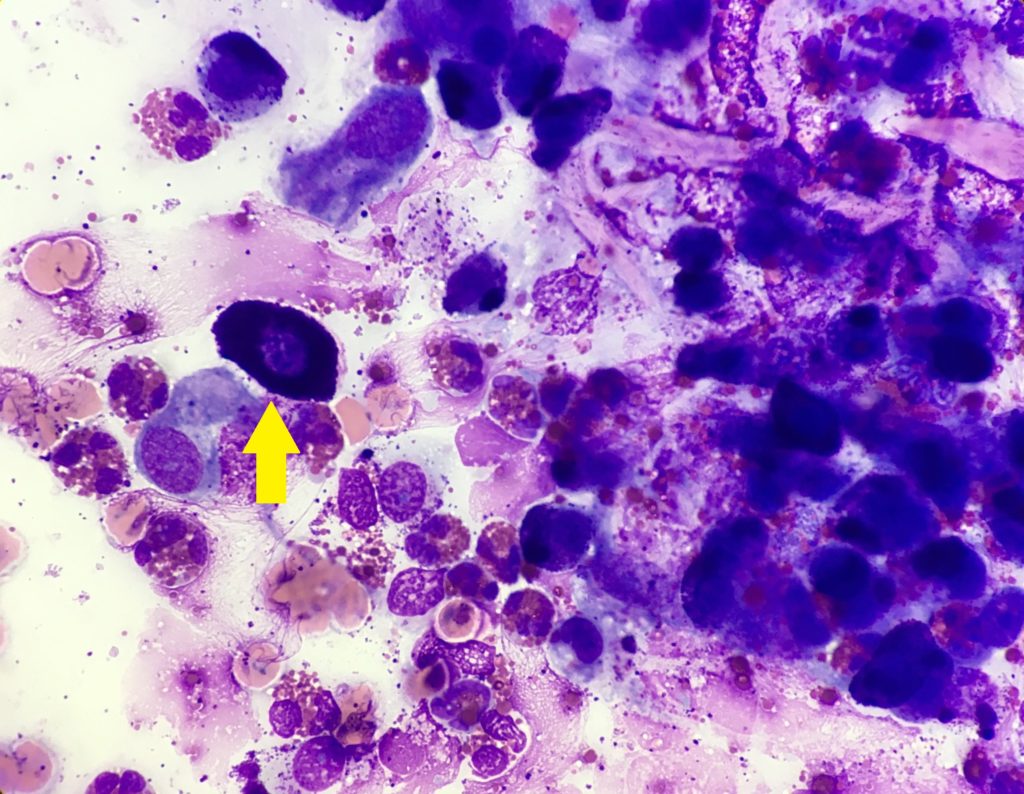KATHRYN JENKINS
Did you know you can submit up to six slides per site, for each cytology case?
Cytology tip:
Increasing the number of sites sampled from each lesion, increases the diagnostic power for a more accurate interpretation. In many cases, increasing the sample number taken, improves the chances of a diagnostic sample (often we find that the last slide looked at, is the diagnostic one!). Taking several aspirates also allows you to review one in-house prior to sending to us. Please also send us the stained slide, as this is also (via Murphy’s law) usually the diagnostic one.
Samples received:
An example recently came through the laboratory, where several fine needle aspirates (FNA) were taken from a skin mass on a dog.
Cytology findings:
One slide contained a large number of eosinophils (Figure 1), and the remaining smears (from the same mass), confirmed a mast cell tumour (Figure 2).
The first sample had likely aspirated an area of eosinophilic inflammation within this tumour. Without the additional smears, differentials would have included mast cell tumour, but also, hypersensitivity lesions (such as insect bite), infectious disease (including fungal and bacterial infection), eosinophilic granuloma, or responses to foreign body.
By sampling several areas of one lesion, cytology was able to narrow down this differential list, and ultimately provide the diagnosis for this case.


Value for money:
Up to six smears can be submitted from one organ/site for a standard cytology submission. Cases where more than six slides are submitted from one site will incur an extra cost, as will multiple sites submitted. See our current price list for details.

